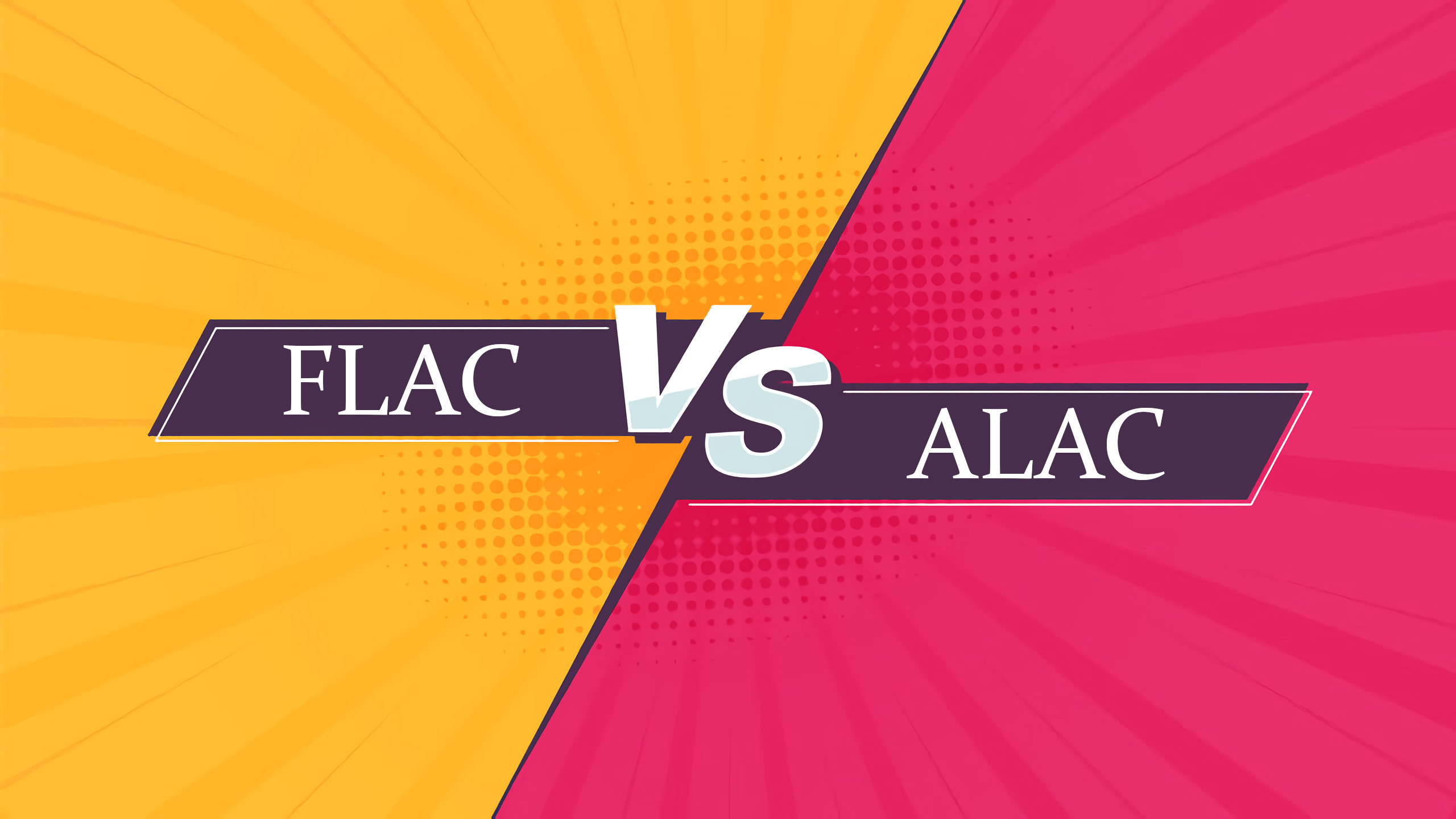Introduction
Since the advent of digital music, scientists have developed many methods to store it – in computer terminology, these methods are called “formats”. As they were designed to fulfill different goals, they are good at different things. As the end user, you might want to learn a little about formats to know which one you should use in any given situation.
The biggest thing that defines any audio format is whether it’s “lossy” or “lossless”. To simplify things a bit, lossy formats sacrifice some audio quality to reduce the file size; they are called lossy because something is lost in the process. On the other hand, lossless formats do not make such sacrifices, and preserve the audio precisely as it was recorded. That does not mean that lossy methods are bad and lossless ones are good. Indeed, lossless formats typically take up more disk space, which might be a concern in some situations. And although lossy formats technically produce worse sound quality, the difference is often too subtle to be noticed. Therefore, both lossy and lossless formats have their place.
This knowledge will help you understand the differences between some of the music formats. For example, MP3 is lossy, while FLAC is lossless, so you can tell which one is good at what. However, both FLAC and ALAC are lossless, so, how do you distinguish between them? What is the difference between FLAC and ALAC?
Brief overview of both formats
FLAC stands for Free Lossless Audio Codec. It was initially released in 2001, although development continues to this day. Like the name suggests, FLAC is free; this means that any developer can add support for FLAC to their programs without paying any fee. This made the format very popular. Many devices, computer programs, and phone apps can play FLAC files.
ALAC stands for Apple Lossless Audio Codec, since it was created by Apple themselves. The first version was released in 2004. At first, Apple kept the format exclusive to their own products, like the iPod. In 2011, the company allowed others to use ALAC free of charge, but it remains relatively unpopular outside of Apple ecosystem.
Differences between FLAC and ALAC
From the overview, we can conclude that FLAC is more common compared to ALAC. In turn, this means that the former enjoys better software support. It’s relatively easy to find players and converters that support FLAC, but support for ALAC is slightly less common. This is also true when you download or buy music; music in FLAC is easy to find, while music in ALAC is not. That said, audio quality is the same for both formats, so you can simply convert between the two.
When it comes to Apple products specifically, however, the opposite is true. For example, iTunes can play ALAC files, but does not work with FLAC. As such, if you want to use iTunes, you also have to use ALAC. That said, the best audio players for Mac do support both, so it’s worth considering other factors as well.
FLAC takes less disk space, and doesn’t require much power to play (which is important for battery-powered devices). However, these differences are very slight, and you might not even notice them in real-life scenarios. On the other hand, you should also know that ALAC has better metadata support. Metadata is information included in the file that describes its contents. For music, metadata includes things like album art, name of the artist, the genre, and lyrics. Since ALAC can store more metadata, it might be the better choice if you have a large library of music and want to keep it organized.
Summary
| FLAC | ALAC |
|---|---|
| Identical audio quality | |
| Better support on Windows and Android | Better support on macOS and iOS |
| Takes up slightly less space | Easier to organize thanks to better metadata support |
| Less power consumption / drains the battery slower | Works seamlessly with the Apple ecosystem |
When it comes to FLAC versus ALAC comparison, there is no clear winner. That said, if you primarily use Apple devices, you will likely prefer to use ALAC. On the other hand, if you mostly use Windows PCs, Android smartphones, and other non-Apple devices, FLAC will probably work better for you. There are some exceptions, of course, but it’s a good rule to follow for an average user.
As a sidenote: Apple sometimes refers to ALAC as Apple Lossless. Don’t be confused; these two terms mean the same thing.


